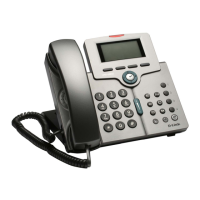We will give you an instance for your reference.
Field name explanation
Enable Input Rules Select it to Enable Input Rules.
Enable Output
Rules
Select it to Enable Output Rules.
Input / Output Specify current adding rule by selecting input rule or
output rule.
Deny/Permit Specify current adding rule by selecting Deny rule or
Permit rule.
Protocol Filter protocol type. You can select TCP, UDP, ICMP,
or IP.
Port Range Set the filter Port range.
Src Address Set source address. It can be single IP address,
network address, complete address 0.0.0.0, or network
address similar to *.*.*.0.
Des Address Set the destination address. It can be IP address,
network address, complete address 0.0.0.0, or network
address similar to *.*.*.*
Src Mask
Set the source address’ mask. For example,
255.255.255.255 means just point to one host;
255.255.255.0 means point to a network which
network ID is C type.
Dest Mask
Set the destination address’ mask. For example,
255.255.255.255 means just point to one host;
255.255.255.0 means point to a network which
network ID is C type.
Click the Add button if you want to add a new output rule.
Then enable out access, and click the Apply button.
So when devices execute to ping 192.168.1.118, system will deny the request
to send icmp request to 192.168.1.118 for the out access rule. But if devices
ping other devices which network ID is 192.168.1.0, it will be normal.
Click the Delete button to delete the selected rule.
Click the Add button if you want to add a new output rule.
Then enable out access, and click the Apply button.
So when devices execute to ping 192.168.1.118, system will deny the request
to send icmp request to 192.168.1.118 for the out access rule. But if devices
ping other devices which network ID is 192.168.1.0, it will be normal.
Click the Delete button to delete the selected rule.
8.4.1.3 NAT
NAT is abbreviated from Net Address Translation; it’s a protocol responsible for
IP address translation. In other word, it is responsible for transforming IP and

